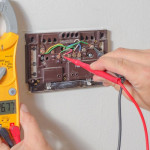How to Know When It May Be Time To Replace the Thermostat
The thermostat is a small but crucial part of the heating and cooling system in the home. The thermostat controls the machinery that is responsible for providing comfort.
If the thermostat starts to malfunction, it can cause problems with comfort and the heating and cooling system, like spaces that are too hot or cold and problems with humidity. It can also greatly increase heating and cooling costs. Here are a few signs to help homeowners determine if their thermostat is malfunctioning so they can take action.
Higher Energy Bills
 The thermostat controls when and for how long the heating and cooling systems run. When the thermostat starts to fail, the system can run for longer than necessary. This is usually due to the internal thermometer reading incorrectly. The resulting loss of efficiency can cause energy bills to rise. Sometimes, they spike quickly, and other times, they creep up slowly.
The thermostat controls when and for how long the heating and cooling systems run. When the thermostat starts to fail, the system can run for longer than necessary. This is usually due to the internal thermometer reading incorrectly. The resulting loss of efficiency can cause energy bills to rise. Sometimes, they spike quickly, and other times, they creep up slowly.
For this reason, homeowners are encouraged to track their monthly energy expenditures. By paying close attention to the corresponding bills, owners can promptly spot the signs of trouble and schedule thermostat replacements quickly. Doing so will be the only way to restore efficiency and bring down monthly heating and cooling costs.
Inaccurate Temperature Readings
 Many homeowners don’t track their bills closely enough to spot spikes in energy usage, but that doesn't mean everything is ok. Thermostats can lose calibration or adjustment for no apparent reason and fail to sense the temperature in the home accurately.
Many homeowners don’t track their bills closely enough to spot spikes in energy usage, but that doesn't mean everything is ok. Thermostats can lose calibration or adjustment for no apparent reason and fail to sense the temperature in the home accurately.
If the thermostat reading is too high or low, the thermostat will cause the system to overwork to reach the inflated setpoint, or the home will be uncomfortable. Verifying this problem is easy.
Simply find a reliable thermometer and place it close to the thermostat. Both displays should be within a degree or two of each other. If readings aren’t close, the thermostat is likely the problem.
Older thermostats may be able to be adjusted or calibrated. New digital thermostats likely cannot. Upgrading an old thermostat may be advantageous for newer features, and replacing a malfunctioning digital thermostat can restore lost performance.
Short Cycling of the System
Air conditioners and heaters are designed to run for certain periods of time. If a heater or air conditioner is too large for a space, it will cycle for only a few minutes, causing massive wear and tear on the system and problems with temperature control and humidity.
Generally, a well-sized HVAC system should run for about 20 minutes before cycling off. While most homeowners don’t sit around and time the length of their heating and cooling cycles, most will notice when something is wrong.
If the thermostat is failing, a short cycle may be apparent. A short cycle may mean that the system tries repeatedly to start every few minutes or only runs before shutting down again. Most often, short cycling is accompanied by noisy unit operation. Replacing the thermostat can fix the problem and eliminate this source of damage to the unit.
About Boutwell's Air Masters
Boutwell’s Air Masters has over 50 years and two generations of experience troubleshooting HVAC problems. They give every customer personalized attention, and they keep their workspaces clean. Call today for heating and air conditioning services in Pensacola, FL.



